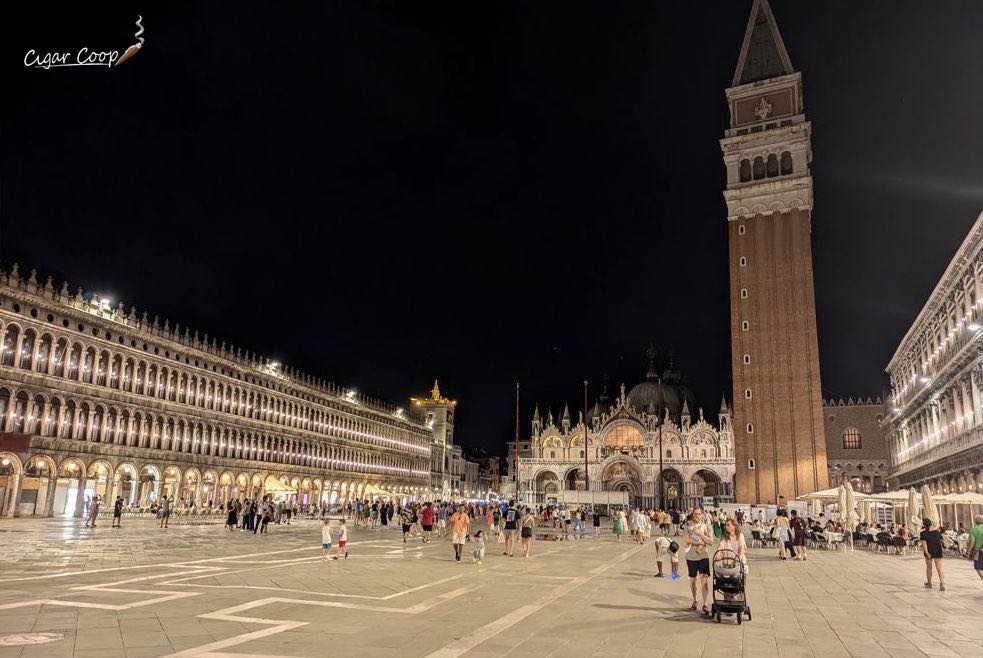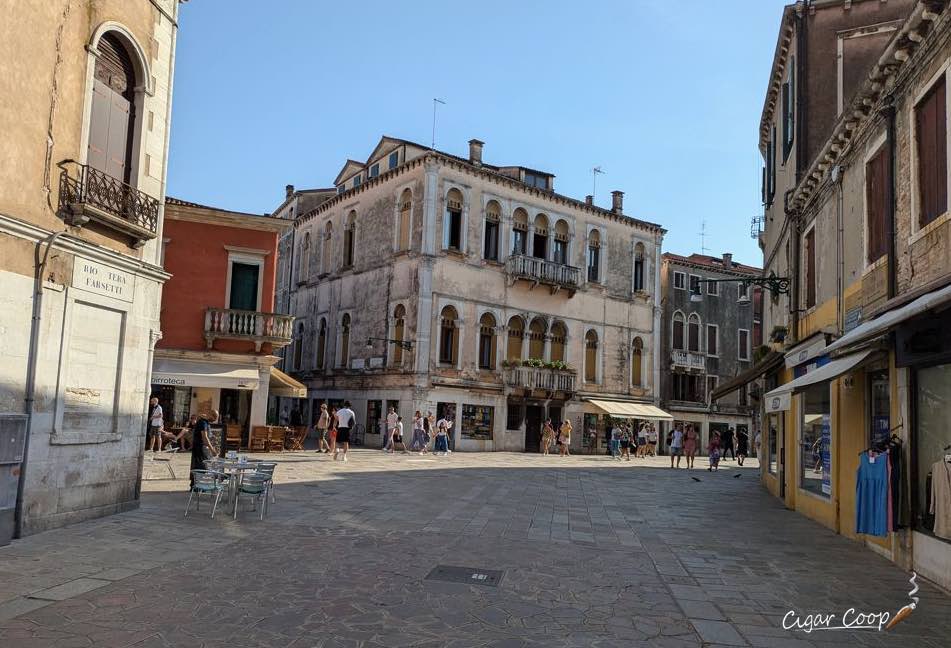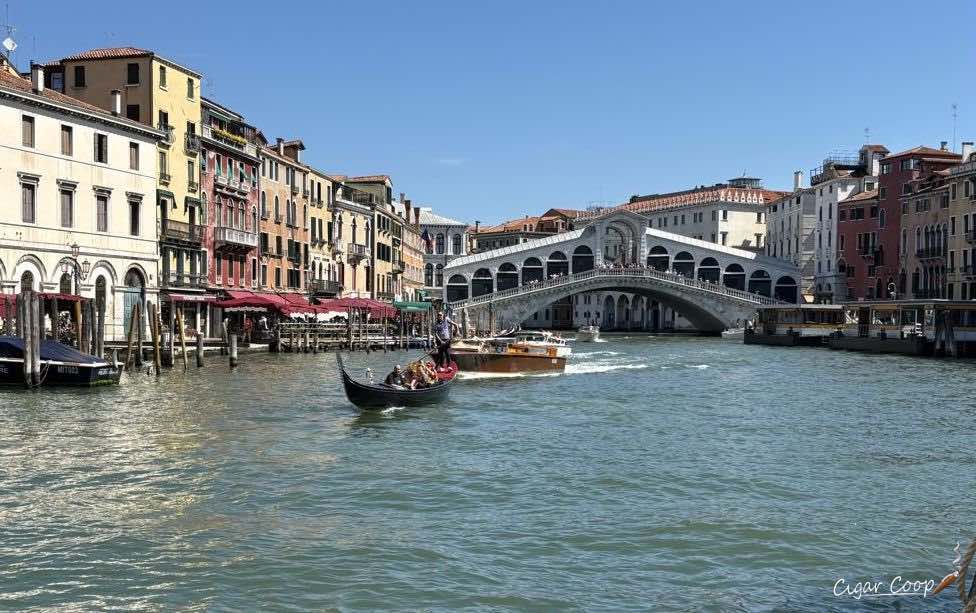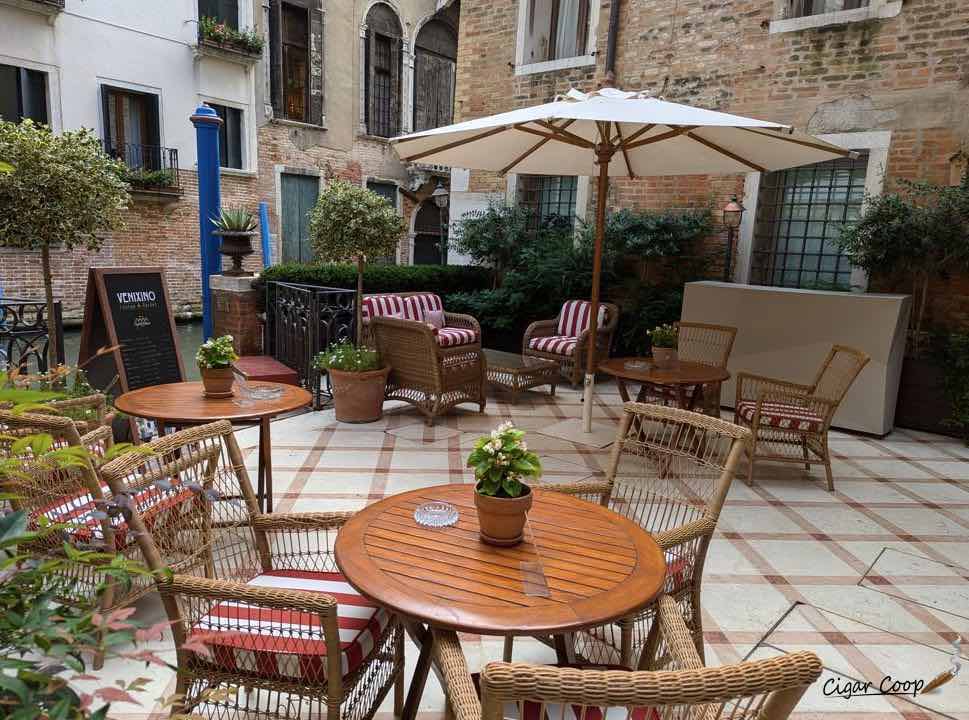In this installment of In My Mind’s Eye, I take you to the historic city of Venice, Italy. This trip was primarily a vacation as I was not there on business. I want to provide some observations on the journey in Venice and discuss cigars and cigar culture in Venice.
This ten-day trip was split between Rome and Venice. I covered the Rome portion separately in In My Mind’s Eye: Rome, Italy. My wife Lisa and I were in Venice from August 10-11, 2024, and then from August 15-19, 2024. We flew in and out of Venice and went to Rome in between.
The City of Venice
While this was my second trip to Italy, it was my first trip to Venice. Venice is the capital of the Veneto region, located in the northeast part of Italy. The city was built on 126 islands with canals and open waters separating them. About 472 bridges connect these parts of the city.
While Rome is a city that spans from ancient times to medieval times to modern times, Venice is a little different. While the ancient Romans inhabited the area, from a historical standpoint, the architecture and art generally stem predominantly from medieval times.
When I went to Rome, I noted that it hadn’t changed much since my previous visit in 1996. While I can’t make such a comparison for Venice, I didn’t see much new construction or renovation. Seeing Fifth Avenue-type stores in older buildings was quite interesting.
If you read the In My Mind’s Eye: Rome report, I mentioned this was the worst time to visit Italy, and that applies to Venice. This was due to two reasons. First, it was the middle of summer – and it was sweltering. (Worse for us, the highest temperatures were just under 100 degrees, which is unusual). The high humidity made it almost unbearable – and Venice had even more humidity than Rome. Second, August is a major vacation month in Italy. August 15 is the Ferragosto holiday and the Roman Catholic Feast of the Assumption. It’s a federal holiday, and most Italian businesses shut down that day. August is also a traditional vacation month in Italy. In fact, many companies shut down for a couple of weeks each August. However, since Venice caters to tourists, the Venice streets and waterways were crowded
Venice has many neighborhoods. The areas of San Marco and around the Rialto Bridge are popular. They have commercial and historic appeal. Much like Rome, some regions are less touristy and offer quite a bit of charm. The Cannaregio and Accademia fall into that category.
Getting around Venice
Most of Venice prohibits cars and trucks, so to get around the city, you must use the waterways or walk.
The Canals
The canals are an incredible sight. The most well-known is the Grand Canal, which cuts through the main island of Venice like a reverse S. It’s the most expansive and busiest canal in Venice. It’s 2.4 miles long and has an average depth of 15 meters. On it, you will see ferryboats, speedboats, and, of course, gondolas.
Of course, there are the many canals that run through the city. Centuries ago, Venice was built on a large lagoon containing smaller islands separated by natural canals. Over time, as buildings were constructed on these marshy islands, the canals were made broader and deeper.
Gondolas
The gondolas are a part of the folklore of Venice. Gondolas are flat-bottomed Venetian rowing boats. For many years, they were the main form of transportation. Now, modern boats like ferries and motorboats have largely replaced them. Nevertheless, gondolas are present throughout the city, now more of a tourist attraction than a means of transportation.
There are about 400 gondolas in Venice, far from about 4,000 that existed 150 years ago. New gondolas aren’t cheap; they cost between 50,000 to 100,000 euros. Becoming a gondolier is also not easy. The number of licenses is limited, and you must go through about 400 hours of training to get one.
Navigating within Venice
Getting around Venice, there are several options:
- Water Taxi: These are not cheap, but they will drop you off as close to your destination as they can dock.
- Gondola: Even more expensive than a water taxi, they are primarily used for sightseeing.
- Ferry: As mentioned, these vaporetti run along the Grand Canal and some of the other waterways. It’s like taking a city bus. They stop at each vaporetto dock, and you may have to walk a bit from the dock to get to your destination.
- Walking: You will need to do a lot of this. (Much of Venice is not wheelchair accessible).
The closest airport is Marco Polo International Airport, which is on the mainland of Italy. You can’t walk or take a gondola from there to the islands. Your options are either a water taxi or ferry. Our water taxi to the hotel cost us a hefty 180 Euros, but it was convenient, and the boats are elegant and comfortable.
Finally, Venice does have a couple of train stations. We traveled by train to Rome and back. We took the ferry to and from the train station but still had to walk to our hotel from the ferry dock.
The train ride between Venice and Rome is about four and a half hours on Trenitalia’s Frecciarossa train (which continues from Rome to Naples). This high-speed train reached speeds of up to 300 km/hour (about 186 miles per hour). The seats are comfortable, and you can reserve them in advance.
For cigar industry people with a (un)healthy obsession with airport selfies and airport photographs, there is plenty of opportunity to do the equivalent on the train.
The Cigar Market in Venice
If you read In Your Mind’s Eye: Rome, you will know that if you are looking for a place in Italy that sells tobacco, it must display a sign to do so. A white T is prominent on the signs. I noticed the T is either on a blue or black background. I asked several people about the differences between the blue and black signs and checked the internet, but I could not get an answer as to whether the background color meant anything different. These signs are also in places with tobacco vending machines.
However, just because there is a store with a T sign does not mean they carry cigars. While Rome had few tobacco stores that carried premium cigars, they were even scarcer in Venice. The other problem was that the holiday season closed down many stores in Venice. Tabacherria La Casa del Signaro was recommended to me, but it was closed for the holiday. I made sure to call ahead this time, unlike my visit to Rome when I arrived and found the cigar store was closed.
It is also not uncommon for cigars and tobacco to be secondary items in a store that sells tobacco. The picture below shows Montecristo products in the upper left of the window, but most of the items on sale had little to do with cigars, let alone tobacco.
Like Rome, Toscano is one brand you will have no trouble finding in Venice. Toscano Cigars are the brand of Manifatture Sigaro Toscano S.p.A.. They are based in Tuscany, Italy, and are one of the oldest cigar companies in the world, going back to 1818. Italian cigars are pretty different from many handmade premium cigars. They leverage fire-cured tobaccos grown in the U.S. (Kentucky and Tennessee) and Italy. These cigars tend to be in the shape of a cheroot. We’ve assessed several Toscano Cigars on Cigar Coop, and while they are different, they can still be quite tasty. Markedly, most Toscano Cigars do not require humidification – making them quite portable. It is also worth noting that Toscano distributes Perdomo Cigars in Italy.
My general advice is to take your own cigars to Venice. You will be able to find places to enjoy them.
Cigar Smoking in Venice
Much like Rome, there weren’t many cigar stores in Rome, and there were very few cigar smokers. Happily, I could find places to smoke throughout my stay, though they were all outdoors. Smoking is prohibited in most enclosed places in Italy, including indoor public spaces and workplaces. According to my observations, there was an area outside my hotel to smoke; the hotel across the canal had a patio where you could smoke, and several outdoor cafes allowed smoking.
The heatwave experienced in Rome was no better in Venice. As a result, smoking outside during the day was not an enjoyable option. Evenings were another story, and these were especially enjoyable.
Caffè Florian
While I do not intend In My Mind’s Eye to be a specific trip recap, one place I think cigar enthusiasts will particularly want to check out is Caffè Florian. Established in 1720, it is the oldest coffee house in continuous operation in Italy and one of the oldest in the world. (Queen’s Lane Coffee House in Oxford, founded in 1654, is the oldest.)
Caffe Florian is located in St. Mark’s Square, the heart of a very touristy area. It’s extremely expensive. However, the food and coffee were excellent, and the ambiance could not be beaten.
There are two things to note. Firstly, a long list of celebrities have visited Caffè Florian. If you are a cigar historian, you will probably know that Lord Byron (Byron Cigars) and Hemingway (Ernest Hemingway) frequented Caffè Florian.
Secondly, you can smoke on the outdoor patio. In fact, it almost seemed smoking was encouraged!
Notably, Caffé Florian features live music. With music, food, coffee, and enjoying a cigar, you are well on your way to having “The Rafael Nodal Experience“ (a favorite city of his is Venice).
Food
Italy and Venice are known for their food. We could write several installments on the food. Simply put, Venice has some amazing cuisine.
Photo/Video Credits: Cigar Coop
Lisa Cooper contributed to this story.



























September 15, 2024 @ 12:48 am
Great content, again. Very enjoyable read with a cigar!